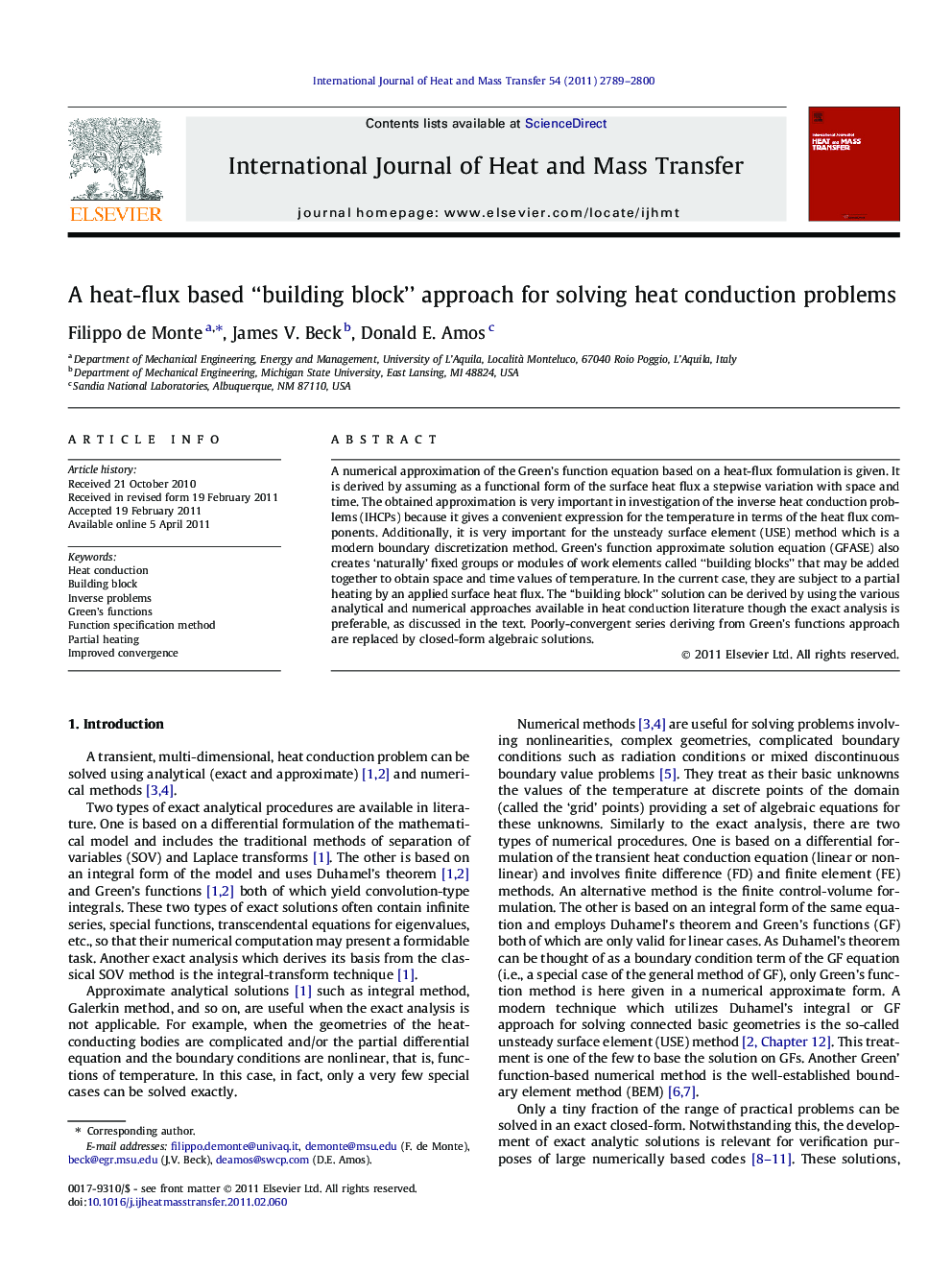| Article ID | Journal | Published Year | Pages | File Type |
|---|---|---|---|---|
| 660089 | International Journal of Heat and Mass Transfer | 2011 | 12 Pages |
A numerical approximation of the Green’s function equation based on a heat-flux formulation is given. It is derived by assuming as a functional form of the surface heat flux a stepwise variation with space and time. The obtained approximation is very important in investigation of the inverse heat conduction problems (IHCPs) because it gives a convenient expression for the temperature in terms of the heat flux components. Additionally, it is very important for the unsteady surface element (USE) method which is a modern boundary discretization method. Green’s function approximate solution equation (GFASE) also creates ‘naturally’ fixed groups or modules of work elements called “building blocks” that may be added together to obtain space and time values of temperature. In the current case, they are subject to a partial heating by an applied surface heat flux. The “building block” solution can be derived by using the various analytical and numerical approaches available in heat conduction literature though the exact analysis is preferable, as discussed in the text. Poorly-convergent series deriving from Green’s functions approach are replaced by closed-form algebraic solutions.
